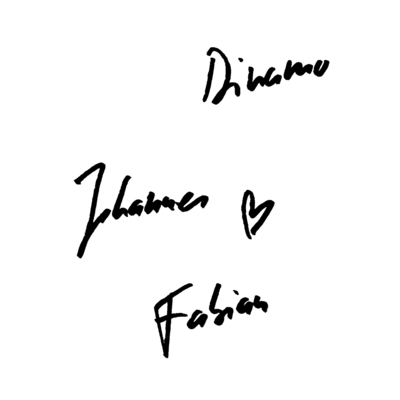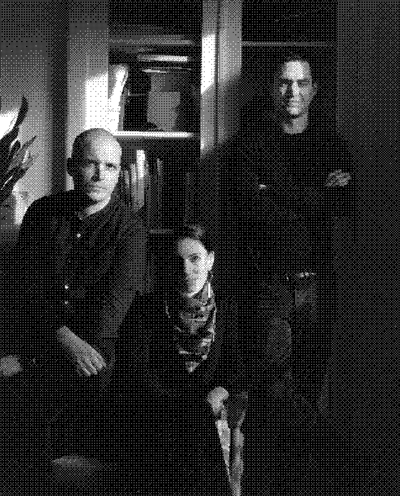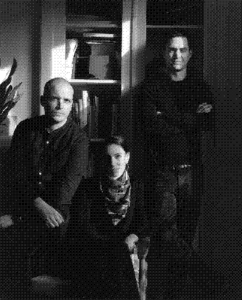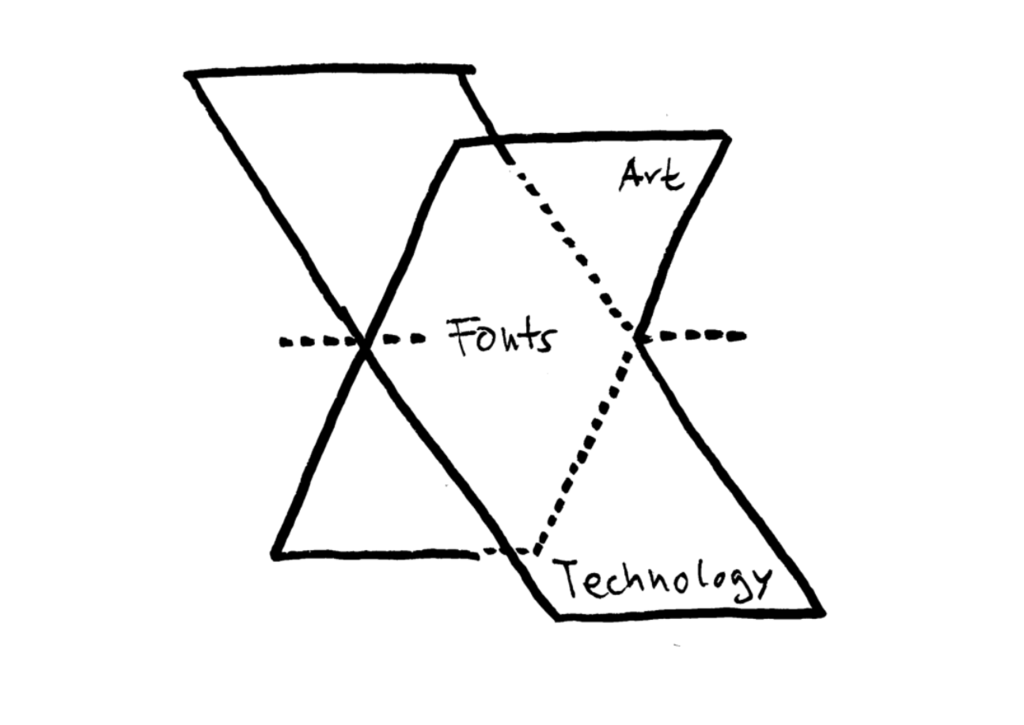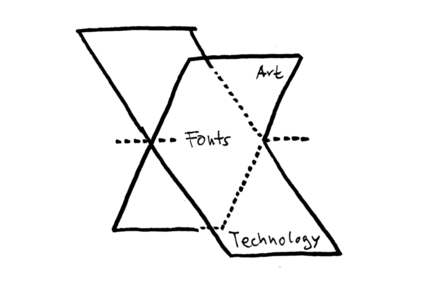Hi guys, could you please introduce yourselves?
I’m Johannes, I’m a graphic designer turned publisher, living in Berlin. I studied in Zurich where I met Fabian, and then continued my studies in Amsterdam. We started our exchange during that time.
FH
And I am Fabian. At the moment I am based in Basel. And together we’ve been launching and developing Dinamo, a studio somewhere between designing typefaces and publishing them, together with a whole lot of people that I’m sure we will be mentioning more during the conversation.
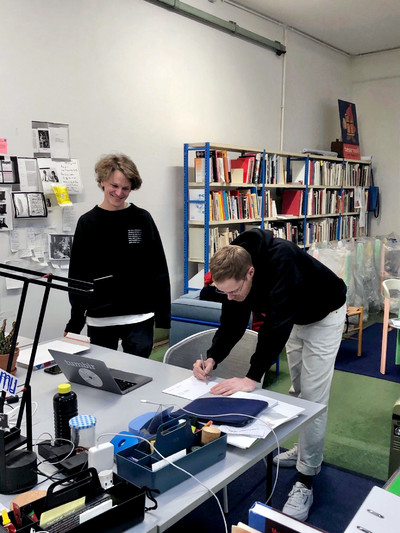
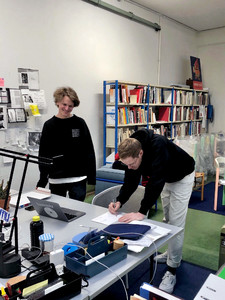
Studio portrait of Fabian Harb (left) and Johannes Breyer
Dinamo’s quite an interesting and diverse ecosystem, how do you present it?
Good question. I feel that the longer we do Dinamo, the less we try to put a finger on what it actually is. Its red thread is rather the people who work together with each other and with Dinamo.
JB
We appreciate the fact that it’s hard to define. You could say this, but maybe another person would actually say something completely different. If you work with so many different people, in different places, doing different things, it’s important to us to stay flexible, so that it can be something personal to each of us.


Dinamo logo
You are often developing new things, you sometimes have side-projects that become Dinamo. So, what is your filter? What’s the Dinamo thing? Fabian, for example, if you were to direct a movie, that wouldn’t be Dinamo, would it?
Of course it is always great to explore first thoughts in more intimate settings. But the moment we are serious about an idea, we have realized that it is the best framework, to fully make it a Dinamo thing. No matter if it is doing a movie, a typeface, or a chair… Defining what is yours and what is mine or drawing lines between what is what, quickly becomes something difficult and something that we are uninterested in at Dinamo.


Dinamo furniture
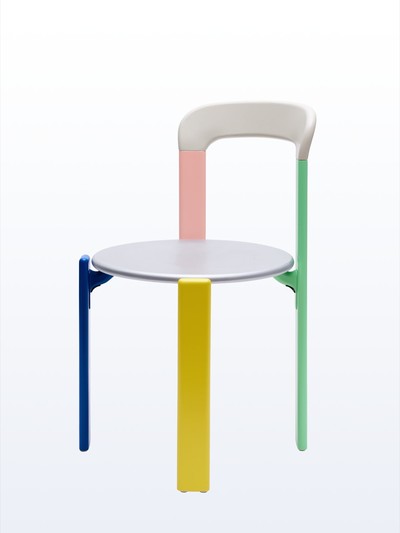
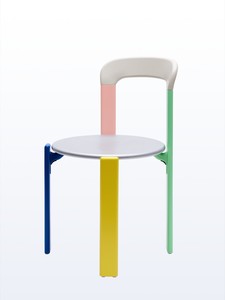
Dinamo furniture
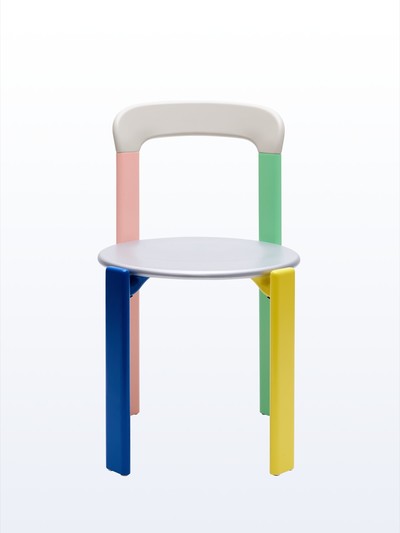
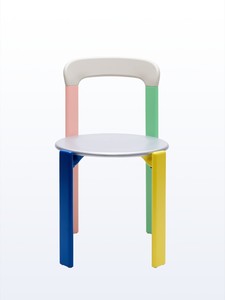
Dinamo furniture
Is there some kind of balance you are looking for, between being a publisher, selling licences, and still being a creative entity?
Finding the sweet spot is crucial, but only slowly we’re becoming more conscious and in control of it. Looking back at the first years, I feel we were producing too little new work but were performing too much around the work we had just done. Like a band producing an album and then touring for three years (instead of going back to the studio and producing another one). We slowly start anticipating such dynamics better and become more intentional about it.
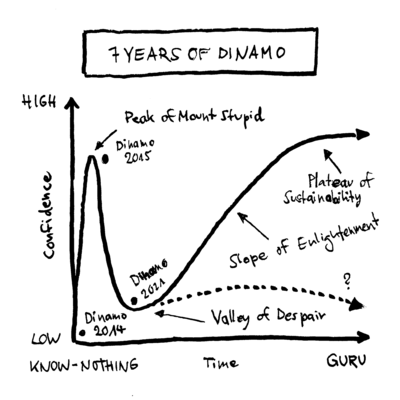

Sketch by Dinamo
What were your plans when you two met and created Dinamo? Were there several steps before it was officially Dinamo?
Dinamo started quite slowly and on the side. Training in graphic design, we gradually became interested in not just working with pre-existing typefaces but to design our own ones for projects. So, Dinamo’s beginnings lay mostly in self-education and gradually grew from exchanging about to design typefaces together. We quickly knew that we work well together, but it wasn’t too clear or pre-planned how all would shape up.
When did you realize that Dinamo could be the center of your work and take most of your time? Do you remember specific moments?
To be honest we were always sure that Dinamo was something that could last. The question was more to find out how it should work – say how much time things should take, how we should talk to each other so that it feels great. But we never really doubted the ship itself. The question was more what type of ship it would be? A little nut shell for two people or a huge airplane carrier?
FH
I think one of the turning points was when we won the Swiss Design Award in 2017. Not only coming with outside recognition but also a grant, we were able to found a proper Limited Liability Company and justify working full time on Dinamo without immediate financial pressure. Before that, we both had our individual graphic design studios and Dinamo was more like a common denominator of time and interest.
Gravity typeface by Dinamo
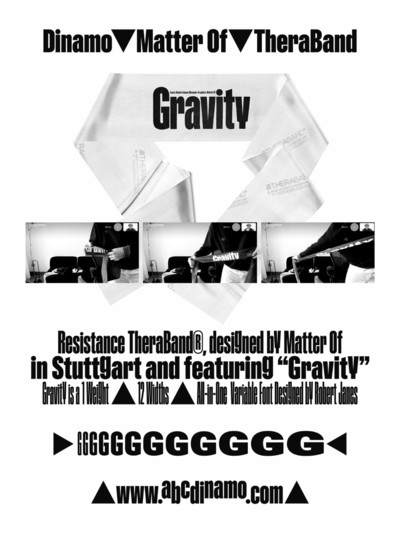

Gravity typeface by Dinamo
Did you work at other Studios before? What did you learn from those jobs that you managed to apply to Dinamo?
I was lucky to intern with Norm, a hardcore artistic graphic design practice with lots of attitude, lots of humor, and really strong family vibes. I really felt acknowledged and rewarded there, both professionally and personally. After my studies, I was a bit nervous and I asked to work with them again. And they said “sorry, we think you need to do your own things” and gave me the first big job to start out. Until today, they have stayed friends and spiritual mentors for me.
FH
After design school, I was working with Laurenz Brunner for a few years. We mostly worked on graphic design projects, but for pretty much every project we drew a new font. In a way, until today where Dinamo hardly gets to do graphic design anymore, I still am very interested in how the usage of type can inform the design of type. This observing and questioning of conventions and conditions surely stems from there.
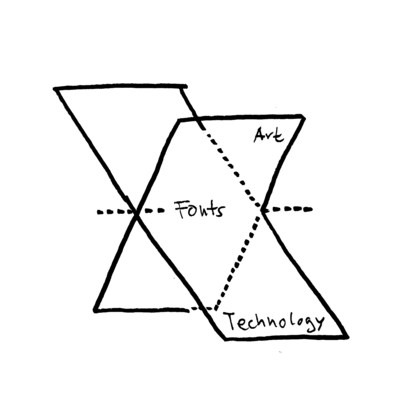

Sketch by Dinamo
You are both coming from Graphic Design and went into Type Design. How do you connect and balance these two things?
Starting out, we just designed the typefaces we wanted to use in our graphic design projects. Many times even without our clients knowing it and so kind of being our own clients a little as well. So, most of those type designs were very specific to the graphic design projects we did. And somehow it just grew from there. Today, we still love making these connections in a context that offers itself to making observations, that allows the questioning, and then making a situation-specific proposal. But overtime I think we became a bit more open and flexible about what these contexts and inspirations we react to can be.
JB
Our general interest in technology for example grew even larger with the incredibly gifted engineers Robert Janes or Renan Rosatti joining Dinamo and enabling developments of complex tools resulting in Variable Fonts like the “Whyte Flip” family or the “Arizona Modulator” for the San Francisco Symphony. And then we have all our support structures like our Dinamo Newsletter, Dinamo Hardware or our Social Media side stages which at their core deal with the same questions concerning ideas and audience as graphic design does.
Work for SF Symphony by Collins and Dinamo
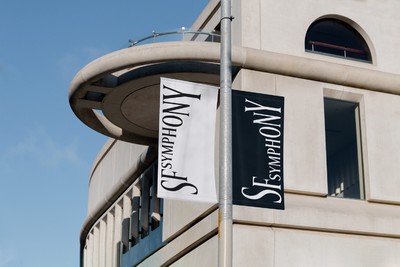

Work for SF Symphony by Collins and Dinamo
Arizona typeface by Dinamo
So, as for graphic design, you are becoming your own and only client. Do you miss other graphic design commissions sometimes? Or are you happy with the workflow you have?
Optimally, we always have a balance between these two: self initiated projects where we have full autonomy and control, and commissions where we open up space for an outside party to develop a dialogue. Both are extremely interesting and rewarding. But with commissions there is often a danger of time pressure and therefore compromises. Not that everything always has to be our way. But we really dislike shipping things that could be improved.
JB
With our own projects it really feels like we can go to the studio and there are all these things flying around and we can just react to that, create things that make sense in our own universe. On the other hand, reacting to the challenges of a specific project, if they happen in the right context, can be super interesting and very energizing.
However, the cynical me would say that a lot of commissions are flawed from the start, and they always will be, and we need to learn how to spot them. Too tight to a deadline to really talk, get to know each other and develop something. Unjustified hierarchies, muddy dependencies or ego driven desires. Basic mood-boards and plain “hype idea” recycling. I shed a tear for our industry each time we find these requests in our inbox; picturing the hidden dynamics that lead to such requests give me goosebumps.
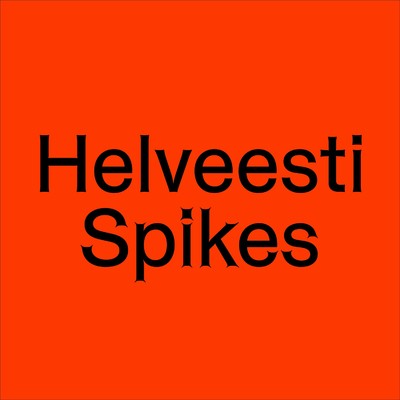
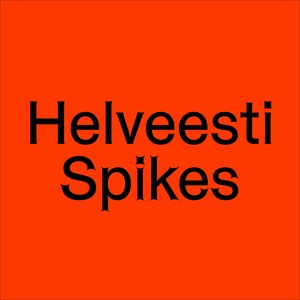
Helveesti typeface by Dinamo
Helveesti typeface by Dinamo
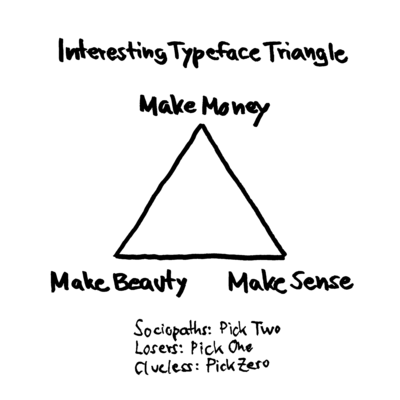
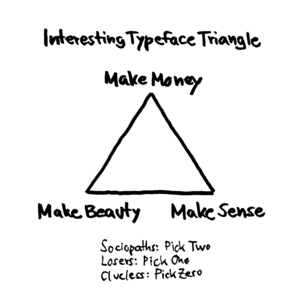
Sketch by Dinamo
So Dinamo as the great escape?
Our doors are always open. But maybe we are more the door at the end of the hallway? We love to talk and work with people. But since there is just so much time in the day, it’s great to receive emails from people that really want something from us. One conversation instead of many chats. The liberty of taking time and going about stuff differently, surprising yourself again.
JB
Plus we’re a great team and have lots of quality exchange within our studios already. That productive energy is something we want to protect. At Dinamo, most of us work four days a week – not more – so there is no buffer. So, whatever meteoroid lands inside the studio will change and inform us, will cause a little chain reaction of additional pleasures (ideally).
You’ve got two offices, in Basel and Berlin. What are their roles, your roles and those of the teams?
So far, we stay away from defining roles between people. Dinamo is the sum of everybody involved, taking advantage of everybody’s strengths and interests. In Berlin the team is bigger and more flexible, as lots of collaborators live here anyways. While Basel is always a bit smaller and all set. And the rest of our current team is spreading widely, from Cologne to San Jose to Torino, Seoul or Lausanne.


Dinamo Basel’s studio
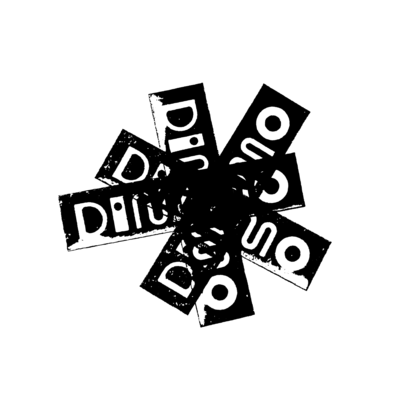
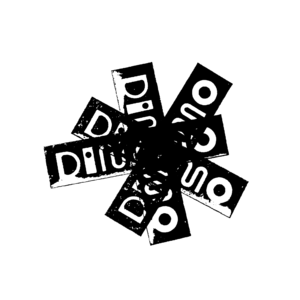
Dinamo logo


Dinamo Berlin’s studio
How did you learn how to manage this set-up and all the people involved?
We neither trained nor fully found out… I read about biz strategy stuff for the past three years as I intentionally wanted to understand more about this. But now I realize I should start to read other stuff again, as I’m a little too strategically wired already anyway. I still have a fair share of builders’ biographies on my reading list though, that I still enjoy.
Is there any book you would recommend ?
I love the biography of James Dyson, the inventor of the Dyson vacuum cleaner. His story is about engineering, tool-making, being an outsider within an established industry, about starting your own company and structuring that. All the way down to finding the right location to produce, sourcing material, involve people. It’s an incredibly tensed story.

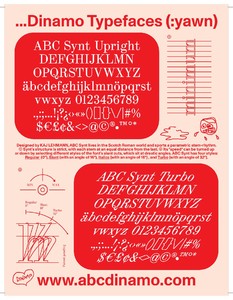
Dinamo flashart
Do you get advice from people around you?
Every day. Mostly unsolicited advice. But we also sometimes ask for it.
FH
But jokes aside. When there is bigger question marks growing at Dinamo, we sometimes take out some time and visit our friend Michael on his farm in the south of Germany. He’s a sort of crossbred between business adviser, philosopher and grandfather to us. And always has great ears and thoughts for our troubles.
How do you manage a usual business week at Dinamo? You two have the Dinamo vision, how do you exchange about it?
We call each other several times a day. And every second Tuesday we do a team call with all of the people who are working with us between the different places. Topics can change from project updates and what everybody is busy with, to pingponging ideas around, to just gossiping. And then we have individual dialogues with everybody that is involved in Dinamo projects, whenever it’s necessary. And everybody has an own secret to-do-list of course.
JB
We always try to be mindful about time. With freelancers we usually try to have one of us taking the conversation lead and the others just join and feedback once there are things to check and decide. Also, since we work across time zones with people like Andree Paat who is based in Estonia or Fabiola Mejia who works with us from Costa Rica, we often use Slack. There, everybody can pick up on conversations or infos when it is a good time for each person individually.
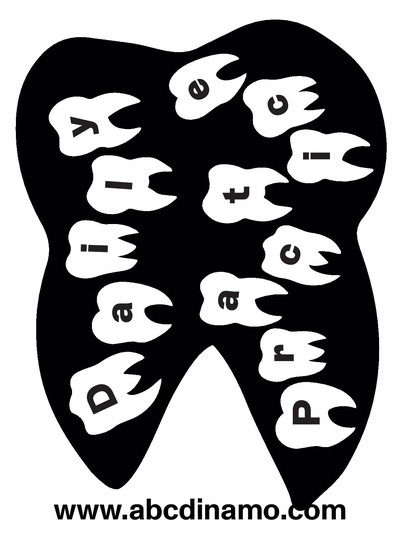
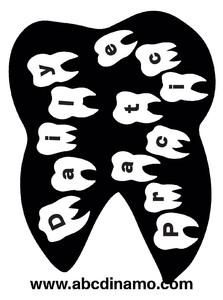
Dinamo Daily Practice
From the outside we feel that it is organic, that there is a specific humor, that the management is clever at Dinamo. How did you conceive this whole structure? Was there a strategy?
A lot of it came naturally. If something was not working, or if we felt that we spent too much time on a certain thing, then we always tried to make out of it the learning and improving part of Dinamo. During one project, we got contacted by very angry right owners. This made us learn a lot about intellectual property and trademarks and find out about our rights and restrictions. Or another big learning curve was realizing the difference between time-based and sales-based rewards. That was when we started to meet with Michael and figured that there is no space for “yours” or “mine” within Dinamo, and that everything just is “us”.
JB
This “aligning on eye level” is very important at Dinamo. You could call that a strategy maybe? It is a great filter to decide: if it isn’t equally interesting for everybody involved, it’s probably better we don’t do it. The same way we don’t differentiate between tasks or projects anymore, but just take everything equally seriously.
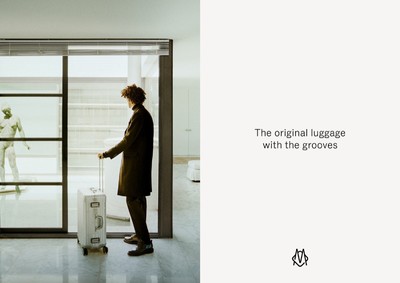
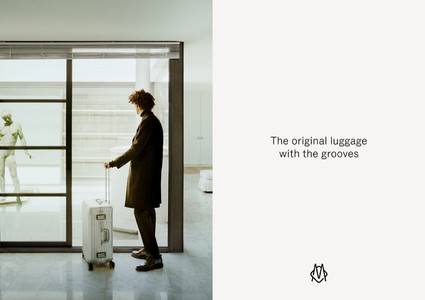
Dinamo’s work for Rimowa
Dinamo’s work for Rimowa

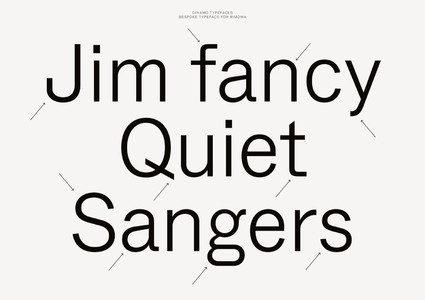
Dinamo’s work for Rimowa
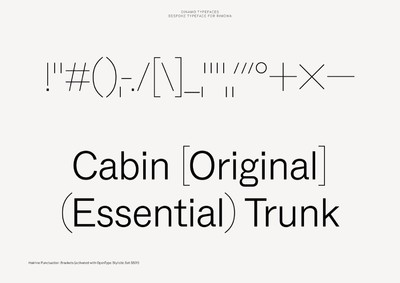
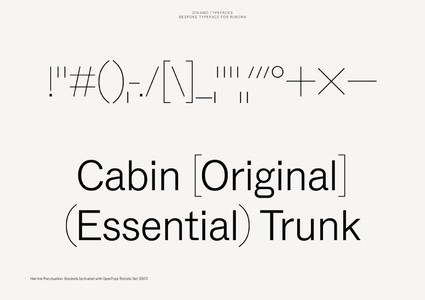
Dinamo’s work for Rimowa
Another part of your business is the Licensing. How do you go about all this, the licensing model and the communication around it? Is it the two of you, or do you get help?
At its core, it’s the two of us. Plus there is Robert Janes who joined us 4 years ago, and is a super-clever type designer/developer and part of all ongoing conversations. And sometimes Vanessa Olt and Rea Stamatoulakis. They are good friends and in charge of Dinamo’s admin and business intelligence since forever.
JB
Sometimes it’s also larger questions and the whole team discusses. Or we do surveys on Social Media… When we started out, we mostly adopted the licensing models that we found in use around us. But soon we noticed it’s just weird conventions that nobody can really explain. We knew it meant “back to the drawing board” which was exciting, because there was room to improve.
If I remember well, you launched this new licensing with the new web-site in 2020? It was a huge step. What do you think of it now ?
Of course, there was a risk. But since we needed to re-do our website anyway, it was the perfect moment to translate all our questions and thoughts into a new licensing model from the ground up. And looking back, it really was worth it. But it took us some time and stamina to get here.
JB
It’s continuous work as well. At the very start, our Desktop License was based on the amount of computer stations installing the typefaces. But with more and more people using multiple devices, this counting made less and less sense to us and we changed our Desktop License to be based on the company’s size. But our Web License pricing was still based on traffic. Now, with our newest website, we abandoned that too and based pricing on total company size all together. We really simplified the processes around licensing typefaces. And if you make things easier, everybody is happy. So, numbers went up, since we simplified things.
FH
It really has become a value-based licensing now: small companies pay small fees, medium companies pay medium fees, and large companies pay large fees. It sounds banal, but it was a lot of discussion to get here. About how people select licences, or how people select fonts. And what question should be asked from our side. And when and how. We even tried to use our collected data to play through predictions. Our new system seemed fair to everybody we sat down with. But if people on the internet wouldn’t understand and accept the change, it could have meant a huge loss.
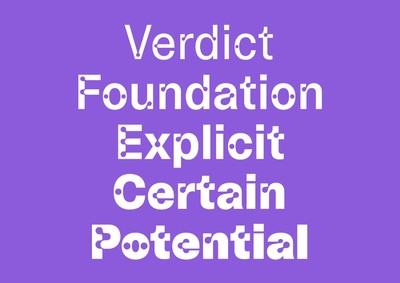

Camera typeface by Dinamo
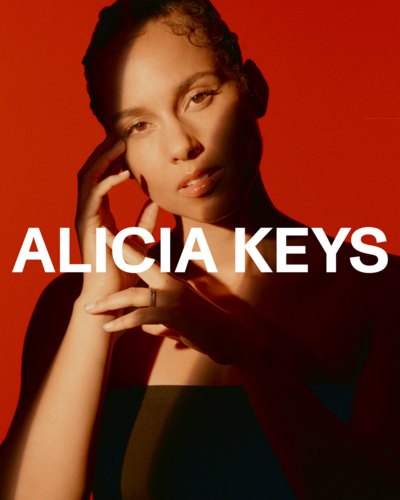

Dinamo’s work for Alicia Keys
Dinamo’s work for Alicia Keys
Let’s continue with the communication of your model. After developing the system, you also had to figure out a way of communicating it, its voice, its identity. How did you work on that?
Fortunately, launching the new licensing system coincided with launching our new website. Or the other way around. But clearly, there were feelings of something new connected with it. New fonts, a new menu structure, lots of insight into the Dinamo studios, and a much bigger emphasis on editorial. At the very top our Dinamo Updates, a monthly newsletter that Johannes started conceiving.
JB
When it comes to writing and editing, we now have Madeleine Morley’s help. Before, we wrote all things ourselves for Dinamo, in plain and beautiful Art School English. The personal bits and anecdotes around any creation always felt more interesting to us. There are other foundries constantly nodding to history and making that part of their own identity. We respectfully tend to take history as a point of departure, a source we admire. But our communication is less “how it started”, but more “how it’s going”, and who was involved? We might publish a font and you could say “I feel some royal vibes, let’s make up a story with an old king. Maybe he’s a bit mad and sips Coca Cola. We can make this tangible, a fantasy mystery.” And it works.
It is great entertainment and very different from what we usually see in type design. Foundries usually feel quite cold, factual, historical, and very industrial. It is a strong positioning from Dinamo. Also the sketches and diagrams you publish are really funny. Do you ever think «we might be pushing it a little too far»?
Much of it is spontaneous and rather unfiltered. So of course, there are moments we second think before we publish. We don’t want to offend anybody. But sometimes you don’t anticipate the next perspective. On our Halloween meme on Hoefler, we had doubts. But it felt funny and honest. Doing design became so designed. All the start-up trappings where work is disguised as something “bigger” feels grim to us. Its auteurs are not the ones who benefit at the end. We don’t want to feed into any of this lifestyle.
Off the record: I’m a huge fan of Succession as well, and I love your memes!
You better be on the record about this.
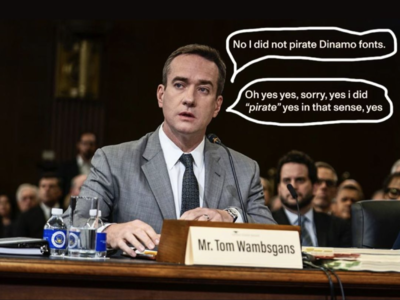
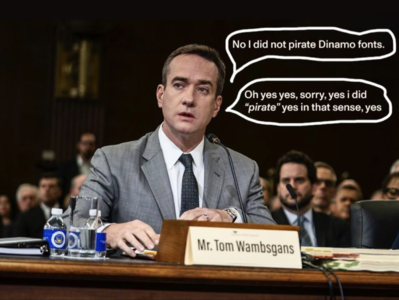
A Dinamo post on Instagram
It’s part of your culture, and it extends your business in an interesting way. Are there other strategies to communicate your developments? I know you’re doing a lot of workshops and lectures as well…
We just try to have as many exciting and interesting conversations as possible. It’s less a strategic thing but more a personal interest. Opening new doors and seeing what’s behind. Trying to spend our time in the most exciting way. If you talk to interesting people, it usually leads to something interesting.
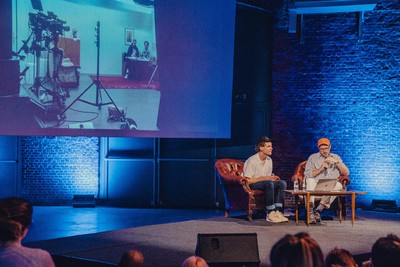
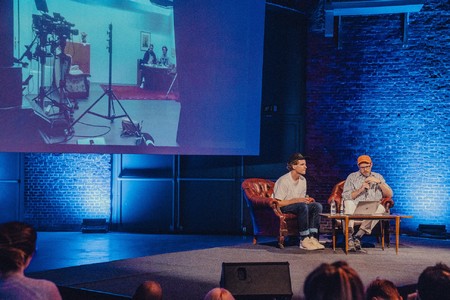
Fabian Harb (left) and Johannes Breyer during a Dinamo lecture
Do you have targets and goals you are working towards? Year-objectives, for example, like “in 2022 we would like to have 20% more customers, and speak in 10 conferences” or so?
I don’t think we have much number driven focus. Most of the time, when we are planning, it has to do with people or problems. We have great people around us with whom we want to work, use work as an excuse to hang out. So, we look for overlaps of interests and try to make things happen. Language extensions are something we’re super interested in. Favorit is now covering Greek that we were working on with Panos Haratzopoulos, Cyrillic that we did with Maria Doreuli and Liza Rasskazova, Hebrew by Daniel Grumer and Yanek Iontef, Arabics from Khajag Apelian and Wael Morcos, Hangul by our very own Mingoo Yoon or most recently Tifinagh designed by Naïma Ben Ayed. For 2022 we are planning to re-release all of them in individual packages and at much better prices, as we came to the quite obvious realization that a “Pro” package containing all the language extensions together is becoming too expensive and more, it prevents people from using Favorit on anything else than Latin content. This kind of planning we always love. But we don’t see much point in abstractly aiming at goals to achieve numbers.
FH
Another big thing is maintenance. Constantly improving the licensing system and extending the website. With our amazing development partners from Humans & Machines we constantly work on updates and improvements. For 2022 we just agreed on a 80 hours per month retainer, so that we can really develop and fine tune further. This, of course, means very clear numbers to work with. And the same goes for our operational costs: studio rent in Basel and a mortgage in Berlin, paying staff, technical infrastructure and social security. But accounting for that isn’t very strategic, but simply vital.
Dinamo Molecule
Let’s continue the conversation about longevity and typedesign’s future. How would you describe this current creative market? And what are your main worries?
We witness a lot of great initiatives around us and interest in collaborating and helping each other, for the moment. But accessibility could definitely become a bigger topic for all of us small publishers. If design applications fully go to the cloud, locally installing font files might become a thing of the past. Platforms like Adobe could easily force us to offer our fonts through them and under their conditions and at their pricing, if we want people to be able to use our products inside of their applications. The spotify set up we all know. Maybe type designers would have to start touring as well then, so we’re back at the tension of “performing versus producing” I spoke about earlier.
How do you feel about Google fonts, actually?
Hard to say. We know that there are realities in which our pricing doesn’t work. And Google fonts are a great solution to that. They are generally well produced, covering large character sets and support a lot of languages. But on a flip side, of course it becomes tough to argue the pricing of non-Google fonts. Why do they cost what they cost? We’ll only be able to create new designs and advance technology independently if there is value in that. They should consider that more. Because it will affect them as well.
Estragon typeface by Dinamo
Following that technology hint: are you consistently working in your Dinamo Darkroom department still?
The Darkroom basically is our virtual space for tool making. Lots of the developments are quite project and moment specific, and some of them grow legacies and become unsupported quite soon. The most prominent and public tool is probably our Gauntlet, to proof VariableFonts. We first published it a few years ago. And kept releasing updates every few months. It’s completely public and fully for free, and we dont track whatever is doing on there. A nice side-effect of it is connecting with a growing community of designers and foundries that support and feedback to its development.
FH
And most recently, we have been working on a tool which covers a different part in type production, the making of proofing sheets. When you work on a typeface, you want to look at all its letters and characters in different constellations, in different weights, its italics, in small and big, look at its punctuation or all the accents. Which is lots of labor, manual and boring, when done in InDesign. So, Robert and Renan are now developing the Dinamo Proof Generator, which will allow you to create overviews of various kinds for every font of your desire. Before this possibility, it took us days, but now it will be only a few clicks. It will be the second bigger Darkroom Tool after the Gauntlet. It’s in internal review still, but soon to be published.
Will Darkroom tools become sales products and a self standing Dinamo business as well, at some point?
We’ve been thinking about that in regard to the Font Gauntlet for a while. When proofing Fonts, it is central to always check the latest file version. But with the Gauntlet being web based, this meant constantly drag-’n-dropping the newly exported TTFs to the browser window. Very boring. As a Desktop Application, this could have been automated. But then, developing comes with production costs. So, you probably want to sell the product to make the money back. Which opens the question of support and maintenance. Somebody should be there to help when you have troubles with a product that you paid for, right? Luckily with the latest Chrome update, you can now auto-reload your local file into the browser. So, it isn’t a question anymore. At least not for the Gauntlet.
JB
Things quickly become bigger than what we can handle with our current set-up. But we’re quite happy with our current company size. If we were more people, it would likely mean more management and less design time. We love to run this all. But we want to keep creating the Dinamo things ourselves. If we cannot be involved in things personally anymore, they better happen elsewhere. There are so many good people out there. It’s much more exciting to pass on a project and discover what somebody else you admire did with it.
Are there any other potential evolutions, developments for Dinamo that you are currently thinking of? Different services, potential evolution, the project of becoming a publishing house?
On the record, there is only so much we can say. A lot of our current efforts are going into improvements. Making the licensing process better and even more easy than it already is. Narrowing down our End User License Agreements with Ethan Cohen, our newest team member for all things legal. And Hardware of course. We’ve been hibernating a bit on that end, but new items will follow up soon. But other than that we cannot talk about yet.
Work for SF Symphony by Collins and Dinamo
How do you feel about current events in the corporate design world? Monotype buying foundries, agency networks growing and all.
We just turned down an offer. Of course it’s interesting to have access to larger machines, bigger productions and all. But there is hardly anything that we couldn’t facilitate through collaborations, I think. Maybe it will be more a question of joining forces. Foundries coming together in offering services, maintenance and support. Streamlining the more repetitive stuff and freeing more time for creation. That could be great.
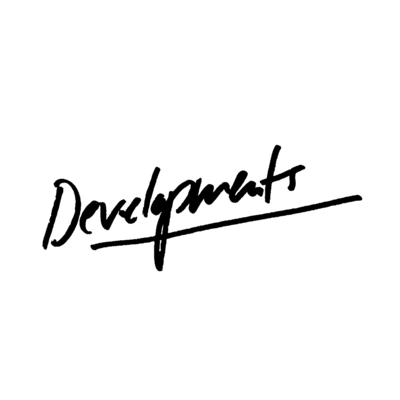
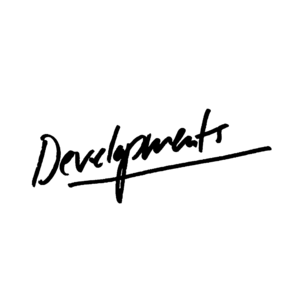
How about the other way around? Would you be interested in acquiring other foundries or studios. Would it be something you consider?
We are already stockpiling as many Magic trading cards as we can. But other than that we’re clueless, what would be worth our investment. Always open for suggestions though. But probably it is a question of lifestyle anyways. Now I call Fabian and we decide things while grabbing an ice cream. Or just skip the afternoon if the waves are good. If we’d start to buy others, or get bought, we have to be there for it. Board meetings and stuff like that. We’d rather be doing things ourselves.
Let’s finish with trivial questions. If you were to do another job, during another era, what would that be?
I’d want to work as a team or couple therapist. Maybe it’d help me learn a thing or two more about relationships, ha! I still want to become one, in this life. Like ten years from now.


Gravity typeface by Dinamo
There are a lot of common points between business management and couple therapy indeed.
I wouldn’t quite know. I became very interested in planting stuff during the lockdown. I’d love to know more about cultivating a vegetable garden. With chicken running around in it. But it would be a bit wild to directly make it my job i guess.
Any advice for the next generation? Wisdom or books you’d recommend?
I just read the Gucci Mane book, very entertaining, lots of wisdom. Reading as a general activity is a winner. Magazines, books, online news, forums, anything.
FH
Find partners and do things in teams would be our wisest and most credible advice I guess.
JB
And have conversations as broadly as possible.
FH
Travel also, if you can. Fly responsibly tho.
